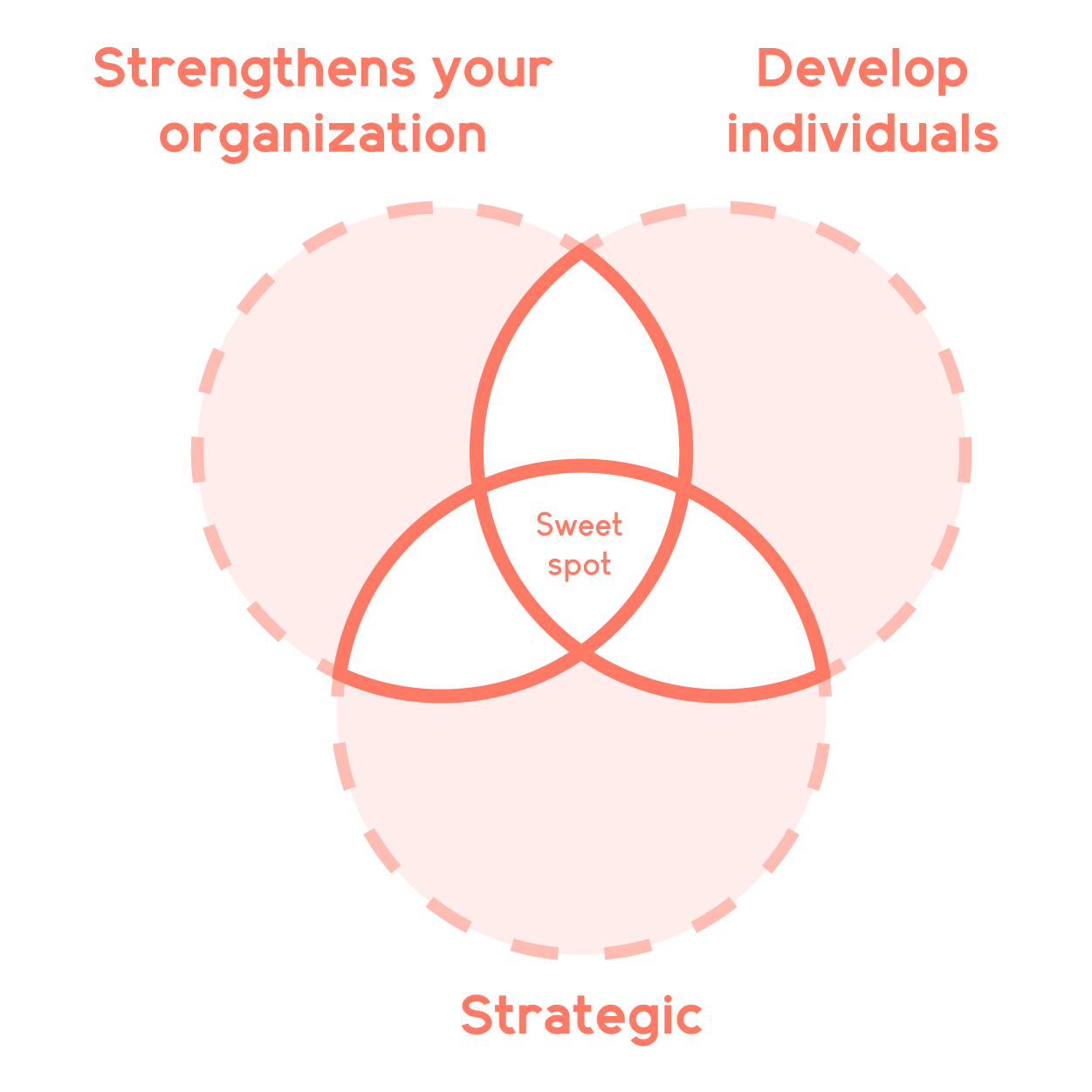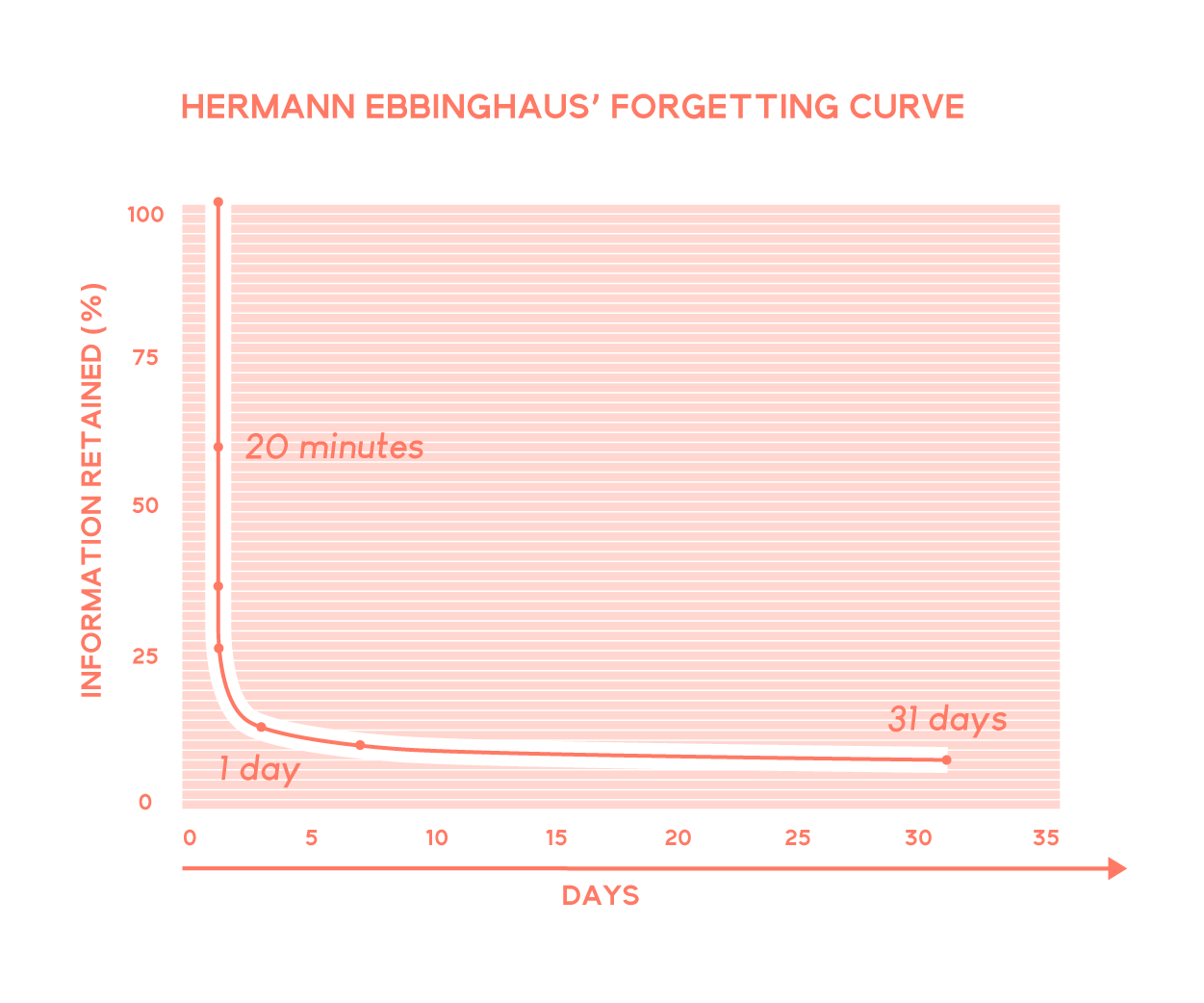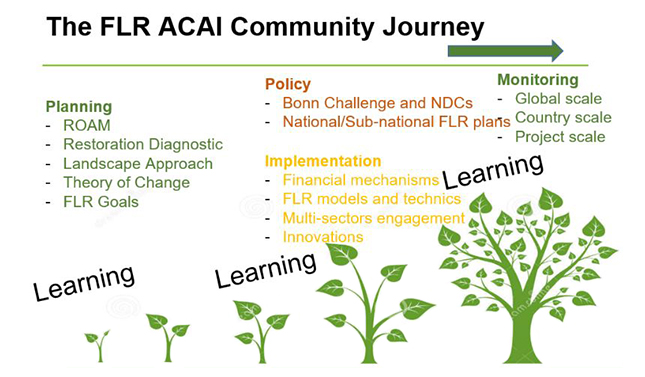
Why invest in members’ knowledge?
Virtual communities tend to have many experts. In a virtual community with a diverse membership, there will be many perspectives, backgrounds, and passions. This diversity enriches the whole community’s capacity and creates a pool of varied skill sets. When it comes to learning offers, there are two key elements to focus on:
- Supporting the exchange of knowledge and experience between community members.
- Building and developing new knowledge and skills among community members.
You must equip members with three types of skills:
- Personal
- Professional
- Impactful (being effective as an active community member)
The learning topics you select must be relevant to your members and support them to unleash their potential. You must also find learning offers that are strategic and support your community’s purpose while also developing individual and strengths.

What knowledge sharing topics are valuable for members?
- Existing or self-produced resources that are connected to your members’ interests (blogs, books, podcasts, etc.).
- Experiences including what was learned in times of success and in times of failure.
- Summaries of what members are working to help avoid duplication of efforts, or to support scaling successful projects.
- Inspirational storytelling including member journeys and experiences.
There are many ways to support learning in a community
Establish a resource library
Create a space for sharing tools and knowledge within your community. Ideally, each member has access-rights to upload their own resources, studies, tools, and publications.
Host thematic calls
There are many formats you can use to make thematic calls exciting and engaging. Webinars, a dialogue series, failure sessions, and hot seats. Take a look at our format library for some inspiration.
Initiate open discussions
In a forum or group, generate conversations about topics or issues that matter to your virtual community members. Establish an online forum/open space where members can post questions or issues and receive quick feedback from others who are also interested in the topic. You can also generate conversation through a live, written discussion session.
Peer groups
Create peer groups to help members learn from each other and build stronger relationships. Intentionality is important in peer groups. Take time to thoughtfully match peer group members together and consider the discussion topics and purpose carefully. See the case study from the League of Intrapreneurs to learn more.
Initiate sub-groups
Create regional, sector-based, thematic or event-based groups to connect members who have similar interests. Remember, all sub-groups must have a clear purpose and must initially receive moderation support to ensure they add value.
Share community stories
The most successful communities leverage the power of stories to attract and retain members. Find ways to encourage members to generate and share their own stories, and provide them with a space to make their stories visible to others in the community.
Mentorship programs
Members can learn from more experienced elders of the community through mentorship. See the tool on how to set up a mentorship program to learn more.
Communities of practice
In communities of practice, members can exchange and learn from each other, and identify synergies. Establish communities of practice that focus on specific themes within a larger organisation, or across networks.
As the community builder, your role in creating learning activities and offers depends on your capacity and experience as well as your community’s expertise. To save time, think about the expertise that exists among your virtual community members and what your members could teach each other. Ask your community members if they are willing to create learning offers for each other.
Examples of…
…learning offers hosted by community builders:
Panda Labs schedules calls that focus on members’ work. This helps members build skills and learn from each other’s experience. Call topics include how to develop corporate partnerships, marketing, and introduction to design thinking.
…supporting knowledge exchange between members
The League of Intrapreneurs set up virtual peer groups of 3-5 people who met regularly via Zoom. After six months of initiation, the participants can decide if they want to continue or opt-out.
Enspiral installed a stewardship system used by 35 members who are stewarded on a one-on-one basis toward personal development, learning, and support with their work. Check out their Stewarding Guide.
The Bosch Alumni Network initiated small travel grants to support members in deepening their connections with others working on similar topics in different locations. The aim is to share insights, gain practical knowledge and new perspectives, and to discover new methods and practices. See the case study for more info.
Your goal is to create value for your members and support them in having a positive impact. In addition to offering work-related topics, members also appreciate space for personal development support, for example, calls about wellbeing and leadership skills.

Source: http://katherinehaugh.com/visual-landscape-of-learning-agendas-at-usaid/
Translating learning offers into a learning agenda
Step 1: Identify knowledge needs and knowledge gaps
Work with your virtual community members to define key knowledge areas that are relevant to your community’s interests and work.
Learn from the past
What can you learn from members who are collaborating, exchanging, or spending time together? Find out what worked and what didn’t.
Analyse the community’s activities
What kind of activities are members planning to undertake in the coming months? Are they planning in-person meetings, a thematic campaign, or a project that members want to implement? Are there any crucial skills members need to do these tasks well?
Find the common threats
What are your members talking about? This information tells you what is important to them and where they want to create knowledge.
Check your assumptions
Your learning offers must focus on the areas of interest for your community. Gather information to ensure you identify the focus areas that are truly important to your members and add them to the learning agenda. You can also launch a survey, or interview experienced members about what learning areas are important to the community. If your community is still young, identify your members’ areas of interest during their initial on-boarding process.
Here a few questions from a survey created by Panda Labs to establish their learning agenda.
- What are you hoping to gain from being part of the Panda Labs Community (global and/or local)?
- In your mind and words, what is the purpose of the Global Panda Labs Community?
- Are there specific learning goals, topics, or skills you would like to develop, or is there support you need from the Panda Labs Community?
- What role do you think you play (or could play) in the Panda Labs Community, and what unique skills would you like to contribute?
Synthesise the information
Regardless of the approach, you will eventually select the knowledge gaps you want to focus on first. Next, with a core group of members, list your areas of focus and prioritise each one. Knowledge gaps that are not a priority now can be revisited in a few years or during the next learning offer development phase.
Step 2: Create learning questions to address knowledge needs and gaps
After selecting the gaps to be addressed in your learning offer, formulate a range of “how-to” learning questions. These questions must be action-oriented and linked to a learning agenda. Learning agendas can be simple or comprehensive. They will vary based on the needs of your community and the resources available for development and implementation. Focus on the most important themes but do not overload members with too much information or materials.
Examples of Learning questions from the WWF
Measuring Success: How can we define and measure the impact we are having in a landscape?
Community engagement: How can we inspire the community to get involved and build ownership and capacity?
Multi-Stakeholder Collaboration: How can we get help to facilitate between the different actors (companies, government, communities, and external entities)?
Step 3: Once you have identified the key learning questions, it’s time to build a learning plan
Before diving deeper, check on your available resources. Be honest with yourself about how much time should (and can) go into the learning agenda. Consider the time required to deliver the final product as well as the time needed to prepare, market, and follow-up. How much can you actually do on your own? Do you have any budget for extra resources? If you have a team, who else will help and how? If you are alone, are any of your community members experts? Can those experts could join as speakers or host full offers?
What to consider when designing the learning agenda
The needs and interests for learning offers might differ within the community or across subgroups and geographical locations. Identify your target group for each different learning offer/question.
If you have more than one key target group, create a persona for each learning question covering the overall profile, recent knowledge on the topic, and the ideal format for learning/technology as well as the value-add you hope to create.
Decide if you will offer an entire series to fill a knowledge gap or if a one-off session is sufficient. Generally speaking, leaner is better.
Avoid duplication of effort by finding out what learning offers already exist. Can you use existing learning offers in some way in your own training? Reach out to other community builders in your network, or ask experienced members for ideas or materials you could incorporate (with their permission).
Keep your members’ learning capacity in mind when designing the content for your learning offer. Decide how you will share knowledge (calls, podcasts, learning groups, reading materials, small group discussions, videos, workshops, virtual conferences, websites).
Ensure learning offers are as engaging as possible and focus on how they will be delivered.
- Combine overview sessions and more intensive learning into a single format. This allows members to get an overview of the material or go deeper if they wish.
- Organise learning offers in a logical sequence and consider if online or offline delivery is best. For more important topics, an in-person gathering might be the best place to deliver a learning offer.
Example: WWF sequence of learning offers created to close a learning gap.
WWF knew that in specific countries there is a joint major threat to forest protection. In response, they developed a sequence of learning offers to equip people to overcome this gap. The learning offer began with a joint kick-off session followed by learning in small groups and case clinics. They purposefully targeted representatives from each country to take part in this intensive learning offer. At the end of the offer, they aimed to build a community of practice that would continuously exchange and learn together in an ongoing fashion.
Step 4: Learning by doing
Create opportunities for members to apply what they’ve learned in a practical way. Applied learning opportunities should be relevant to members as individuals and to the community as a whole. Without these chances to apply learning, members will eventually forget what they learned. In fact, the forgetting curve, created by the German psychologist Hermann Ebbinghaus in the late 19th century, says that up to 90% of information is lost after one week.

You can prime participants to reflect on how they can use the training in their work or projects by providing space and time to:
- Review the information provided during the learning offer.
- Identify key takeaways.
- Create an action plan to put learning into practice.
Congratulations! You’ve completed the learning agenda.
Step 5: Present and market your learning agenda
It is up to you if you want to share the full learning agenda with the community, or if you want to share learning offers one at a time. Whichever way you choose, think about how to advertise each learning offer to target the appropriate group of people within your community. Ask your power members to help you reach the people who would benefit the most from your learning offer. It is also important to invest time in the appearance and aesthetic quality of your learning offer and marketing materials. The visual quality of your material demonstrates to others that your learning offer is worth their time investment. Canva is a great tool to help you make things look awesome.
Example: Learning offer presentation made by WWF to the food community.

Below is an example of how the WWF’s Forest Community presented their learning agenda. While this overview shows the overall learning gaps they hope to fill, Forest Community decided that some details should not be shared with the community at this point. *Don’t worry if you don’t understand the content of the example.

- Co-create
Always aim to “work out loud” when designing the learning agenda (check out the glossary). This ensures that others can share their thoughts and opt-in to help with the design or implementation. If multiple people are involved in the implementation, provide co-creators with clear guidelines about how to contribute.
- Be creative
The Bosch Alumni community has hosted on online BarCamp using virtual reality. On a virtual island, community members were able to walk around and participate in different learning sessions hosted by fellow members (see the case study for more info). There are many formats you can use to suit your community. Whatever you’re planning, remember to be brave and try new things.
“We wanted to do something other than a standard webinar on a given topic. So we started by looking at the offline formats that are popular within our network, such as BarCamps, and decided to transfer the methodological design into a virtual context.”
Alexandra Schiffmann, iac
- Share
Designing learning materials, agendas, and other items needed for your learning offer requires a lot of work. Remember to share the workload with others as much as you can. If you are regularly exchanging with other community builders, save time and energy by sharing learning offers that can be replicated for each others’ communities.
Tips:
- Keep learning offers as practical and engaging as possible and do not underestimate the importance of how knowledge is presented.
- Focus on inclusion and don’t forget that people might understand themes differently or have different experiences and interpretations of the theme.
- Keep your learning agenda alive. As you begin to answer your learning agenda questions, subsequent questions will emerge. Capture these additional questions and evaluate your learning agenda from time to time to ensure it is still relevant to your community.
- Members’ interests might change over time. New members may join or external circumstances such as a political change or a crisis may shift what your members want to focus on for learning or impact-creating activities.
- Don’t forget that learning opportunities are also a way for community members with similar interests to get to know each other.
- Encourage members to learn out loud and share what they have learned with others in the community.
“Following a successful exchange, exchangers are asked to post a short story and picture summarising the outcomes of the meetup on the online platform, to ensure that knowledge is shared with the wider community.”
Vinzenz Himmighofen, Bosch Alumni Network
Every community has its own learning agenda and the journey that members embark on to define that agenda varies depending on the priorities of the community. The DIF undertook a rigorous process to understand its members’ preferred engagement styles, channels and degree of involvement by holding focus groups and open calls for content submission.
A year into the launch of our global network, we were looking for ways to increase interactions between different network members; The Learning Exchange Grants were born. Learning Exchange Grants (LEGs) are small travel grants that help members of the Bosch Alumni Network to deepen their connections with other network members by supporting visiting individuals working on similar topics in different locations or travelling to events organized by members. The aim is to share with each other and gain practical knowledge and new perspectives about other members or organisations within the network. The grants also allow members to discover new methods and practices and to find new perspectives on their own work.
The grants combine online and offline elements. Applicants have to find their matching partner via our platform and must have at least 70% of their profile filled out to be considered for the grant. Following a successful exchange, exchangers are asked to post a short story and picture summarising the outcomes of the meetup on the online platform to ensure that knowledge is shared with the wider community.
Picture this: you open software on your computer and an island unfolds in front of you. In Sims-like computer game fashion, you get to walk around, change your physical appearance and outfit, and talk to others. It is not actually a computer game but a learning exchange offer from the Bosch Alumni Network.
Network members from the US to Indonesia met in this kind of online environment for the first edition of a virtual BarCamp in October 2018. Using an online venue allowed people to connect across the globe without the hustle, costs or environmental impact of travelling.
The League is a learning community supporting intrapreneurs working in various sectors to reach their potential. Learning agendas play a crucial role in the League’s strategic approach and in what kind of support it offers. When members’ interests change, the community and the learning offers must change with them. A peer cohort model and learning formats such as case clinics and global learning sprints are regularly used in their learning agendas.
